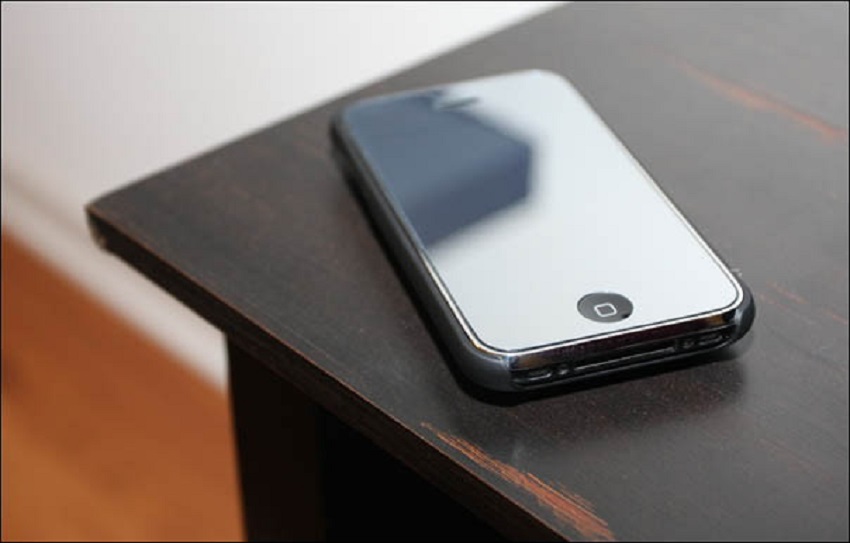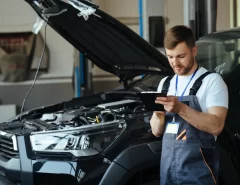How beautiful are the smartphones just taken out of their box and how it hurts to cover them! However, protection by covers and other accessories are the best way to prolong your life and preserve the attractive appearance of your first day. In this guide to buying screen protectors, we review the main alternatives of the market, as well as their strengths and weaknesses to help you choose the one that best suits you and your phone. There are many types of screen protectors.
Choose a mobile phone screen protector
When choosing a screen protector for our mobile phone we will assess the following features:
Resistance against bumps falls and scratches. In the screensavers, it is common to find a figure that refers to the hardness using the Mohs scale, is careful because it is a misleading concept when assessing its resistance on a daily basis.
Without going any further, on that scale the diamond is the king, an extremely hard but at the same time very fragile material. A practical recommendation to take care of the phone’s screen is to accompany the protector with a cover that is thick enough to protect against side impacts.
The thickness of the protector is a notable difference between the different types of the market. In general, we will move between 0.2 millimeters and 0.45 millimeters. The fact that a protector is thicker does not necessarily imply that it is more resistant, since the materials, its design or the internal structure that forms it also comes into play.
Of course, how thick a protector is that it is important at an aesthetic and tactile level, being more appreciated by the edges than one that is thin.
Another important aspect is the degree of transparency, especially for those protectors with a multilayer structure. In the market, we find protectors above 95% transparency.
The glass is fashionable in smartphones, having jumped from the panels to the housings, giving some effects to the passage of very attractive light. But they have a face B: they are authentic magnets for the prints. The same goes for the screens. In this sense, it is interesting to bet on screen protectors with the oleophobic layer. Keep reading how to remove screen protector.
The touch experience of the terminal is decisive. In general, all protectors respond well to a touch with one finger. But the thing changes when we use the multi-touch experience since not everyone responds the same. For example when trying to zoom with two fingers.
Finally, there are screen protectors that incorporate additional functionalities such as privacy filters – making reading difficult if we are not facing the screen -, with anti-glare surfaces thanks to a matte coating or with extra resistance against stains.
Types of screen protectors
Although the first step to choosing a screen protector is to choose one that is compatible with our smartphone model. The next thing will be to determine what type we want, or what is the same, what material is manufactured. This choice will depend on its characteristics, placement system and investment to be made.
PET
It is the typical screen protector that we usually call colloquially “plastic” because, in fact, it is a plastic, very common in the packaging of food and bottles.
PET screen protectors essentially offer protection against scratches that can occur when coming into contact with keys, nails or coins.
Among the advantages of PET screen protectors is their lightness, how fine they are and their price. Since they are usually the cheapest, in addition to coming in packs.
The PET screen protector has a soft touch and is somewhat rigid, which constitutes a limitation if we want to adhere to screens with curved edges.
In general, brands known as Tech Armor offer good quality protectors with cuts that precisely fit the design of the terminal. As well as greater clarity and transparency. Of course, with the passage of time, it is common for everyone to lose sharpness due to the sun’s rays and the nipples of the fingers.
If you have a cheap or old telephone, it is a protection option for the screen to consider.
TPU
When climbing a step in protection we run into the thermoplastic polyurethane or TPU that, when adhered to the screen, looks very reminiscent of orange peel.
The TPU is a plastic that stands out for its elastic properties, its flexibility, resistance to scratches. And also the deterioration caused by grease and oils.
Because of its elastic nature, it has a certain ability to “cure” small scratches in a short period of time. By absorbing these impacts while maintaining its structure.
TPU screen protectors are generally more expensive than those made of PET. Among the most interesting brands with this type of protectors are Spigen, IQ Shield or Zagg.
Tempered glass (or glass)
They do not have the capacity to recover the TPU, but in terms of resistance, they are harder and better withstand falls. And impacts than the previous ones, as well as the effect of sand scratches. They also offer a high degree of transparency.
This type of protection is composed of several layers forming a kind of sandwich: silicone to absorb shock. With oleophobic coverage, with anti-glare properties and also tempered glass. All mounted to not occupy more than half a millimeter thick.
There are screen protectors with an 8 or even 9 on the Mohs scale. But they are not infallible, especially with side impacts, their particular kryptonite. Hence it is essential to accompany your protection with a cover with prominent edges
Tempered glass is the most expensive screen protector. Although we will always have to make a much higher outlay by replacing the panel of our phone. Some brands to consider are Nillkin H + Pro, J&D, InvisibleShield, Armorz, Stillersafe, Ultimate Shield or SAN MIN.
Nano liquid
Another type of screen protector of less popularity is to apply a solution on the phone screen covering the entire panel.
This layer is extremely thin, which means that they are barely imperceptible. But in return, the most serious scratches can reach the screen.
Another handicap of this type of protector is that they cannot be removed like the previous ones. But that they are gradually disappearing, so it is very difficult to rely on their protection over time.
How to put a screensaver
There are two ways to install a screen protector: dry and wet. In the case of the protector, we will find which one corresponds to it. As well as the tools necessary for its assembly.
Put a dry screensaver
For the dry method static electricity is used, without the need for additional adhesives. For the protector to properly adhere it is necessary that the surface is completely free of dust. In these cases, it is common for the kit to include a wet and dry wipe. To properly clean the panel and leave it completely dry, ready to fix the protector.
The next step will be to align the protector properly and place it on the surface. This is where the problems begin.
A good idea for those with a low firm pulse is to opt for easy installation kits that include a frame. This frame fits the edges of the phone so that we can place one side. And gently drop the rest, carefully stretching with the dry cloth towards the edges to extract the bubbles that may remain.
With this method, there is the possibility of removing the protector and fixing it again. Although it is easy for dust to be deposited. Some kits also include electrostatic bands to remove it.
Put a wet screen protector
The wet option includes a glue protector fixation system. Here the need for precision is extreme because once attached, taking it off will be complicated, deteriorating the properties of the screen protector.
As in the previous system, we must clean and dry the screen with the wipes. And, although there are kits that include the framework for easy installation, a large dose of the pulse will be necessary. On the bright side, when adhering firmly and quickly from the beginning, fewer bubbles usually occur and less dust is trapped.





Leave a Reply